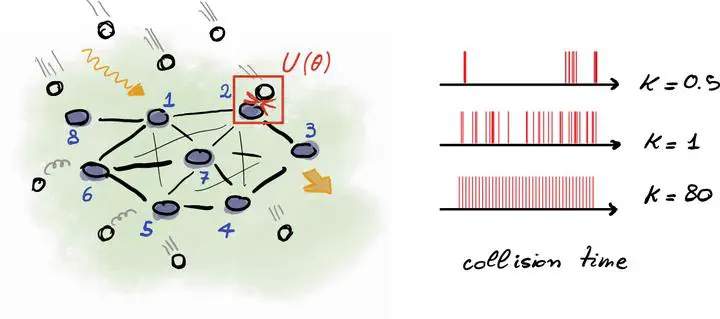
Abstract
Noise-assisted transport phenomena highlight the nontrivial interplay between environmental effects and quantum coherence in achieving maximal efficiency. Due to the complexity of biochemical systems and their environments, effective open quantum system models capable of providing physical insights on the presence and role of quantum effects are highly needed. In this paper, we introduce a new approach that combines an effective quantum microscopic description with a classical stochastic one. Our stochastic collision model (SCM) describes both Markovian and non-Markovian dynamics without relying on the weak coupling assumption. We investigate the consequences of spatial and temporal heterogeneity of noise on transport efficiency in a fully connected graph and in the Fenna–Matthews–Olson (FMO) complex. Our approach shows how to meaningfully formulate questions, and provide answers, on important open issues such as the properties of optimal noise and the emergence of the network structure as a result of an evolutionary process.